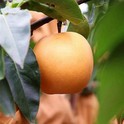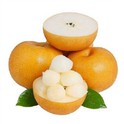As a dedicated supplier of Crunchy Apples, I understand the significance of providing customers with the freshest and highest - quality produce. One of the most common concerns I encounter is how to tell if a Crunchy Apple is spoiled. In this blog post, I'll share some practical tips and scientific knowledge to help you determine the freshness of these delicious fruits.
Visual Inspection
The first step in assessing an apple's freshness is through visual inspection. A fresh Crunchy Apple typically has a vibrant color and a smooth, unblemished skin. For instance, Fuji Red Apple should have a deep, rich red color with a glossy finish. Any signs of dullness, discoloration, or dark spots can be an indication of spoilage.
Brown or black spots on the apple's skin are often a tell - tale sign of mold or decay. These spots can start small but may spread quickly, affecting the entire fruit. Additionally, if you notice any soft or mushy areas on the surface, it's likely that the apple is starting to spoil. The skin should feel firm to the touch, and any indentations or sagging can suggest internal breakdown.
Apples also have a natural bloom on their skin, which looks like a fine, powdery coating. This bloom helps protect the apple from moisture loss and microbial invasion. A fresh apple will have a visible bloom, while a spoiled one may have lost this protective layer, appearing shiny in an unnatural way.
Smell Test
The sense of smell is a powerful tool when it comes to detecting spoiled apples. A fresh Crunchy Apple has a pleasant, sweet aroma that is characteristic of its variety. For example, Bright Yellow Apples often have a light, citrusy - sweet fragrance.
If an apple gives off a sour, fermented, or unpleasant odor, it's a clear sign that it has started to spoil. Fermentation occurs when the natural sugars in the apple are broken down by yeast or bacteria, producing alcohol and other by - products. This can happen when the apple is damaged or stored in improper conditions.
Texture and Taste
The texture of a Crunchy Apple is one of its most appealing features. A fresh apple should be crisp and juicy, with a satisfying crunch when you take a bite. To check the texture, you can gently press your thumb against the apple's skin. If it gives way easily or feels spongy, the apple is likely spoiled.
When it comes to taste, a fresh apple will have a balanced flavor profile, with a combination of sweetness and tartness depending on the variety. Crisp And Sweet Apples are known for their high sugar content and refreshing taste. A spoiled apple, on the other hand, may taste bitter, sour, or have an off - flavor. This can be due to the growth of mold, bacteria, or the breakdown of the apple's cellular structure.
Storage Conditions and Shelf Life
Understanding the proper storage conditions and shelf life of Crunchy Apples is crucial for maintaining their freshness. Apples are best stored in a cool, dark place, such as a refrigerator. The ideal temperature for storing apples is between 30°F and 40°F (- 1°C and 4°C). At this temperature, the apples' respiration rate slows down, which helps preserve their quality and extend their shelf life.
When stored in the refrigerator, most Crunchy Apples can last for several weeks. However, it's important to keep them away from strong - smelling foods, as apples can absorb odors easily. If you store apples at room temperature, they will have a shorter shelf life, usually around one to two weeks, depending on the variety and the initial freshness.
It's also important to handle apples with care to prevent bruising and damage. Bruised apples are more likely to spoil quickly, as the damaged cells provide an entry point for bacteria and mold. When transporting or storing apples, make sure they are not overcrowded, and avoid stacking heavy objects on top of them.
Scientific Explanation of Spoilage
The spoilage of apples is a complex biological process that involves the activity of microorganisms and the natural aging of the fruit. Apples are living organisms, and even after they are harvested, they continue to respire. Respiration is the process by which the apple uses oxygen to break down sugars and produce energy, carbon dioxide, and water.
As apples age, their cellular structure begins to break down, and the cell walls become more permeable. This allows microorganisms, such as bacteria and mold, to enter the fruit more easily. Mold can grow on the surface of the apple, producing visible spots and releasing enzymes that break down the apple's tissues. Bacteria can also cause fermentation, leading to the production of alcohol and off - flavors.

The rate of spoilage is influenced by several factors, including temperature, humidity, and the presence of other fruits. Apples produce ethylene gas, which is a natural plant hormone that can accelerate the ripening and spoilage of other fruits. Therefore, it's important to store apples separately from other produce to prevent cross - contamination.
Importance of Quality Control for Suppliers
As a Crunchy Apple supplier, quality control is of utmost importance. We have strict protocols in place to ensure that only the freshest and highest - quality apples reach our customers. Our team of experts carefully inspects each batch of apples at various stages of the supply chain, from the orchard to the packing facility.
We use advanced sorting and grading technologies to separate apples based on their size, color, and quality. This helps us ensure that our customers receive apples that meet their expectations. Additionally, we monitor the storage and transportation conditions to maintain the optimal temperature and humidity levels, which helps extend the shelf life of the apples.
Conclusion
Determining if a Crunchy Apple is spoiled is not as difficult as it may seem. By using your senses of sight, smell, and taste, and by understanding the proper storage conditions and the science behind spoilage, you can easily identify a fresh apple from a spoiled one.

As a trusted supplier of Crunchy Apples, we are committed to providing our customers with the best possible product. If you are interested in purchasing our high - quality apples for your business, whether it's a grocery store, a restaurant, or a juice bar, we invite you to reach out to us for a procurement discussion. We look forward to the opportunity to serve you and meet your apple supply needs.
References
- Kays, S. J. (1997). Postharvest physiology of perishable plant products. CRC Press.
- Watkins, C. B. (2002). Postharvest handling and storage of apples. Horticultural Reviews, 27, 1-48.
- Fellman, J. K., Mattheis, J. P., & Rudell, D. R. (2003). Postharvest physiology and storage of apples. Washington State University Extension.






